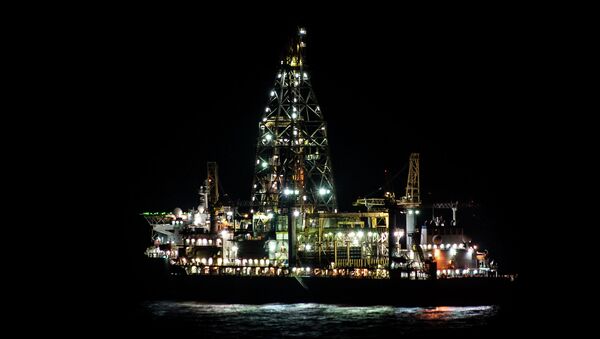Less than one month ago, energy giant Exxon Mobil announced that its drillship Deepwater Champion had made a discovery at a drilling site known as the Stabroek Block. One hundred and twenty miles off the coast of Guyana, the area contains 295 feet of high-quality oil-bearing sandstone reservoirs. Exxon called the oil discovery "significant."
"Over the coming months we will work to determine the commercial viability of the discovered resource, as well as evaluate other resource potential on the block," Stephen M. Greenlee, president of ExxonMobil Exploration Co. said in a statement.
Which is great news for whichever country holds territorial claim over the discovery. Unfortunately, that’s a matter for debate.
Deepwater Champion’s well rests off the coast of the Essequibo estuary. While the river flows, roughly, through Guyana’s center, the country has held longtime border disputes with Venezuela, their neighbor to the west. Caracas has claimed all land west of the Essequibo ever since it was awarded to Guyana by an arbitration tribunal in 1899.
And now that a large oil stockpile is involved, those territorial disputes just got even worse. Last month, Venezuela issued a decree laying claim to a massive swath of ocean off the coast of what it sees as its rightful territory.
Those claims, naturally, include the Deepwater Champion well.
The Guyanese government was quick to call foul, warning its neighbor that the new claim represents a violation of international law.
"Any attempt by the Bolivarian Republic of Venezuela to apply that instrument in an extra-territorial manner will be vigorously resisted by the Cooperative Republic of Guyana," the foreign ministry said in a statement.
For the administration of Venezuelan President Nicolas Madura, the move is in keeping with his plan to expand its "integral maritime zone" farther into the Atlantic.
Making matters trickier is the fact that Deepwater Champion’s exploratory well came with Guyana’s blessing, as well as Guyana’s finances. Esso Exploration and Production Guyana holds 45% interest in the well, with the remainder divided between Hess Guyana Exploration Ltd. and CNOOC Nexen Petroleum Guyana.
Whichever country wins out, if the situation plays out anything like the South China Sea dispute, you can expect American warships in the Caribbean by month’s end.




